Before visiting Florida recently, I did a little online research to determine where we could see flamingos in the wild. I assumed if we visited the right natural habitats these iconic birds would be easily sighted. After all, flamingos are found all over the state of Florida, aren’t they? Turns out, they’re not!
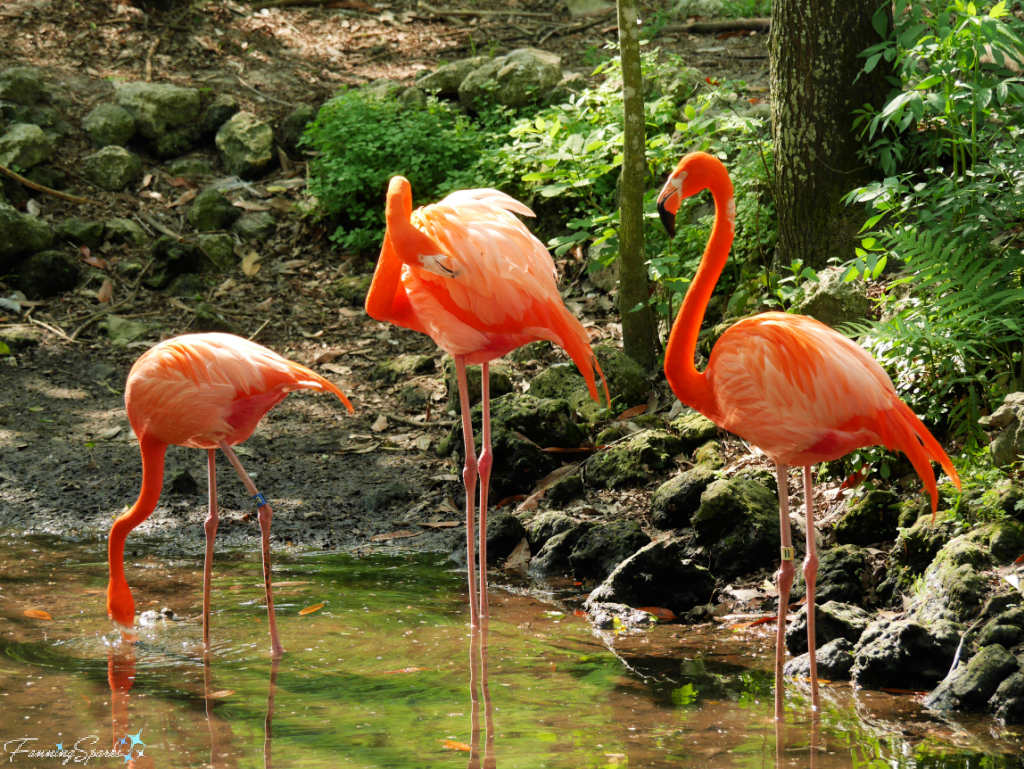
The American flamingo (Phoenicopterus ruber), also known as the Caribbean flamingo, naturally inhabits locations such as the Caribbean islands, Caribbean Mexico, Belize and northern South America. “[It] is also found in South Florida and the Florida Keys, both of which were likely the northernmost extent of its distribution. … Since the arrival of Europeans, the population started to decline, up until the 1900s, where it was considered completely extirpated.” says Wikipedia.
In her 1991 book, Flamingo, author Caroline Arnold states “In the United States, the only large group of free-flying flamingos lives in a sanctuary in the center of the Hialeah Racetrack in Florida. This flock, which began in the 1930s with twenty-five imported birds, now numbers more than six hundred.”
Shown below is a postcard from 1940 with the title “D.C. 4—A Flamingo Hatching, Hialeah Park, Miami, Florida”. The back of the postcard elaborates “The unique feature of Hialeah Park is its great flock of flamingos. These birds were imported from Cuba and South America and in 1939 for the first time, flamingos were raised to maturity in this country. That first season 62 birds were hatched at Hialeah and this year there were almost one hundred.”
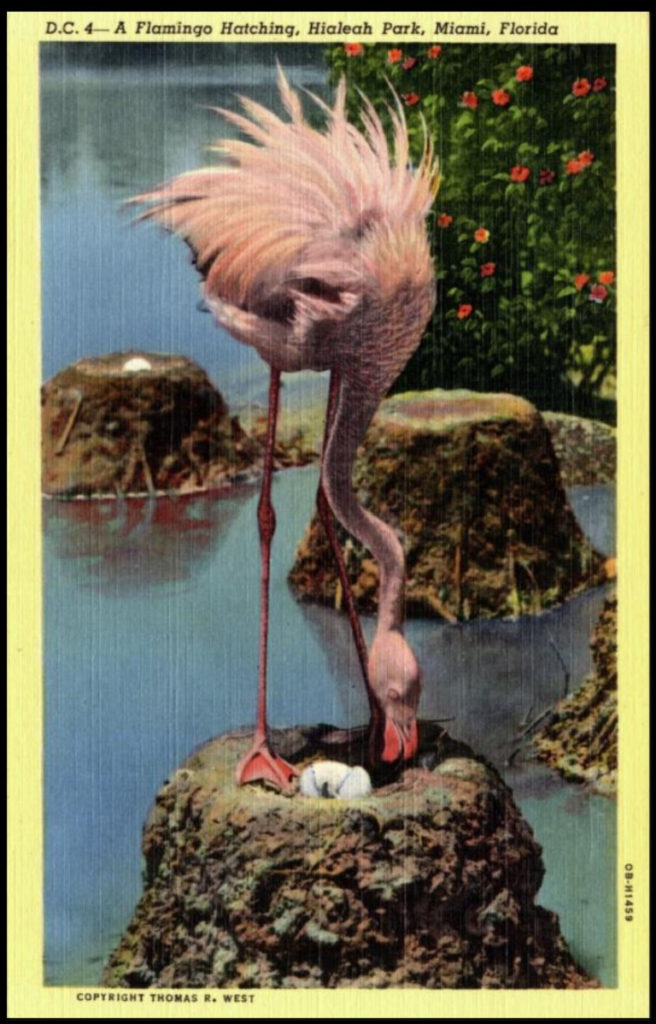
“During the 1950s, birds from the captive population at Hialeah Park frequently escaped, thus leading to the conclusion that all modern flamingos in Florida were escapees.” explains Wikipedia. However, a 2018 study conducted by Steven Whitfield, a biologist at Zoo Miami, and several other biologists found that “flocks of thousands of flamingos used to live in the Everglades and the Keys and that the birds may even have nested in the region. The reason they are no longer abundant is that locals used to hunt them for their meat and feathers.” reports a 2018 National Parks article. “Very few flamingos were spotted in the wild during the first half of the 20th century, but both the number of sightings and the size of flocks have increased since, a trend that matches the recovery of flamingos in the Caribbean.” The good news is “as park managers and others work to increase the flow of freshwater into the Everglades, visiting flamingos will find an environment mirroring the conditions that supported large flocks more than a century ago.”
Nowadays, the best places to see flamingos in Florida are gardens, parks and zoos. The Ellie Schiller Homosassa Springs Wildlife State Park has a beautiful flamboyance of flamingos. Yes, a group of flamingos is called a flamboyance, colony, stand or pat!
We visited this wildlife refuge after swimming with manatees in nearby Crystal River (see previous blog post Face to Face with a Manatee). It was perfect timing because the flamingos were dressed in their best seasonal finery. Their coloring “becomes vibrant coral in the breeding season” explains the park signage. It’s easy to see why these birds were named “flamingo”—a word which is thought to originate from the Portuguese or Spanish word meaning “flame”.
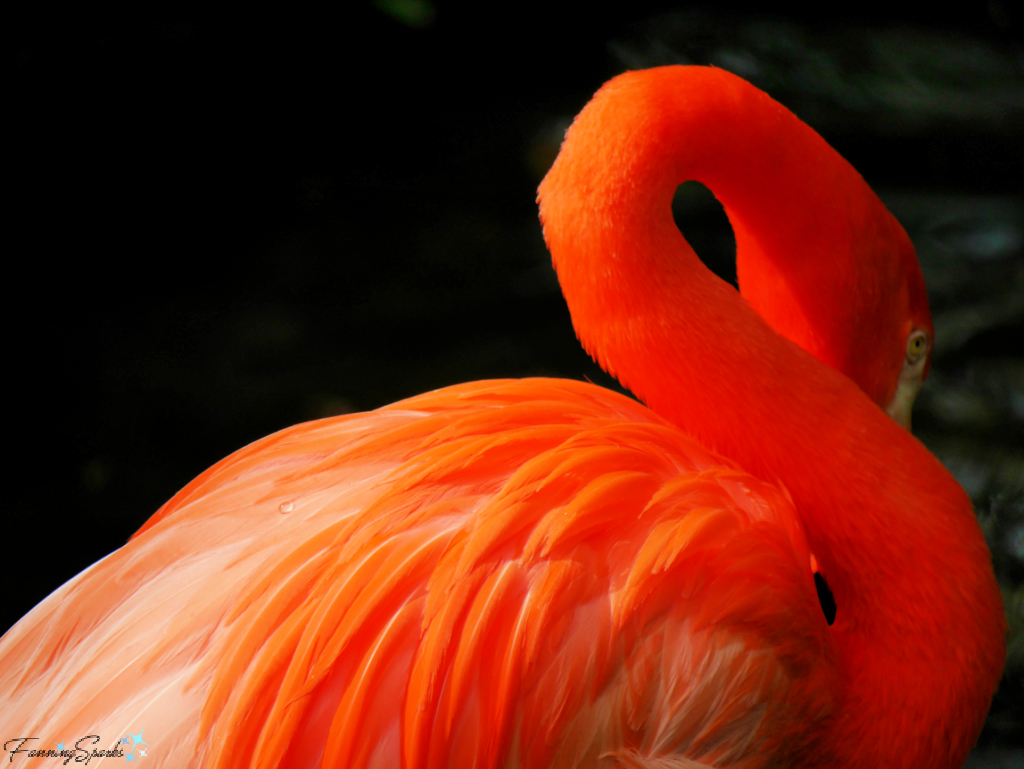
“Some of the most important elements in the flamingo’s diet are substances called carotenoids. These yellow, orange, or red molecules are produced by green plants, fungi, and bacteria. When animals eat foods that have carotenoids in them, their bodies change these substances into other forms [such as vitamin A]. Flamingos convert carotenoids into the pigments that make their feathers so colorful. Large amounts of carotenoids are found in the natural diet of flamingos, particularly in the algae they eat.” explains author Caroline Arnold.
The same thing happens to the tiny crustaceans, such as the very, small ½“ brine shrimp, that flamingos eat along with the algae—a fact which may have led to the common belief that flamingos are pink because they eat shrimp.
The flamingo’s coloring varies by species—some are indeed pink. But the American flamingo is a beautiful, brilliant red/orange coral color.

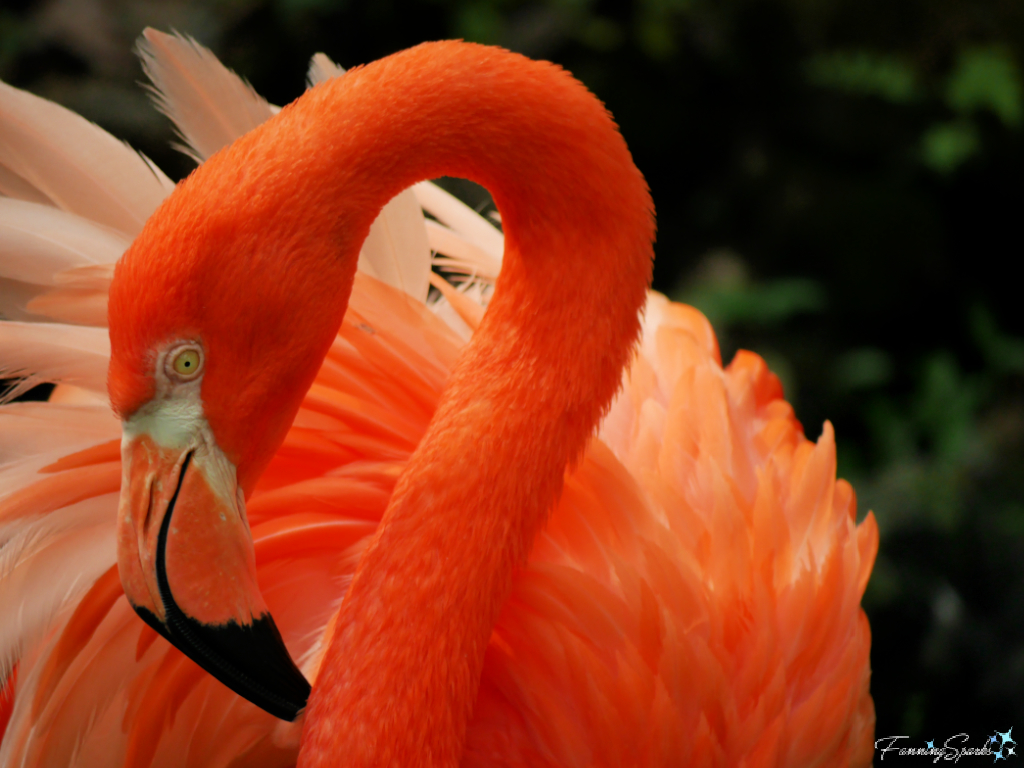
The flamingo’s coloring is outstanding but this unusual bird has many other remarkable characteristics. The flamingo’s bill is an example. “Unlike the bills of most birds, it is hinged on the upper part rather than the lower. This allows the flamingo to open and close its bill easily while moving forward with its head upside down. The edges of the bill are lined with stiff, comb-line bristles called lamellae. These act like small sieves when the mouth is closed. To eat, the flamingo walks slowing through a lake or lagoon and uses its long, slender neck to lower its head to the water’s surface in order to scoop food and water into its mouth. ” says Caroline Arnold.
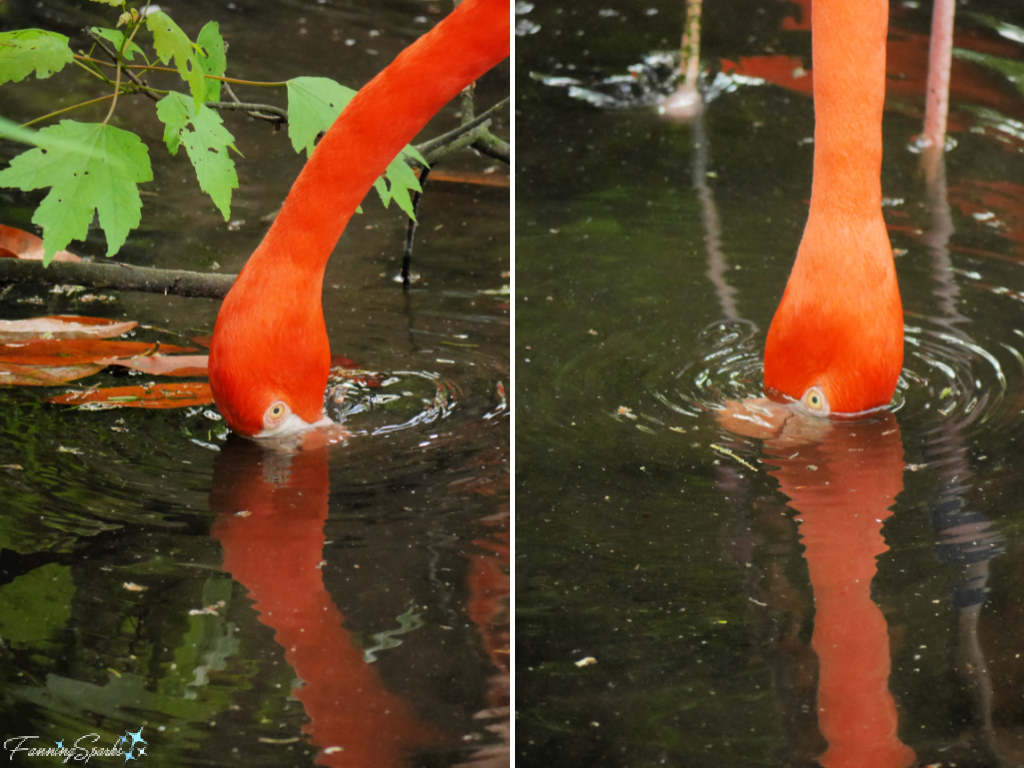
“With its head still upside down, the flamingo uses its large, fleshly tongue to push the water out through the bristles. Food particles are trapped on the inside of the flamingo’s mouth. Then they are removed by the tongue and swallowed.”
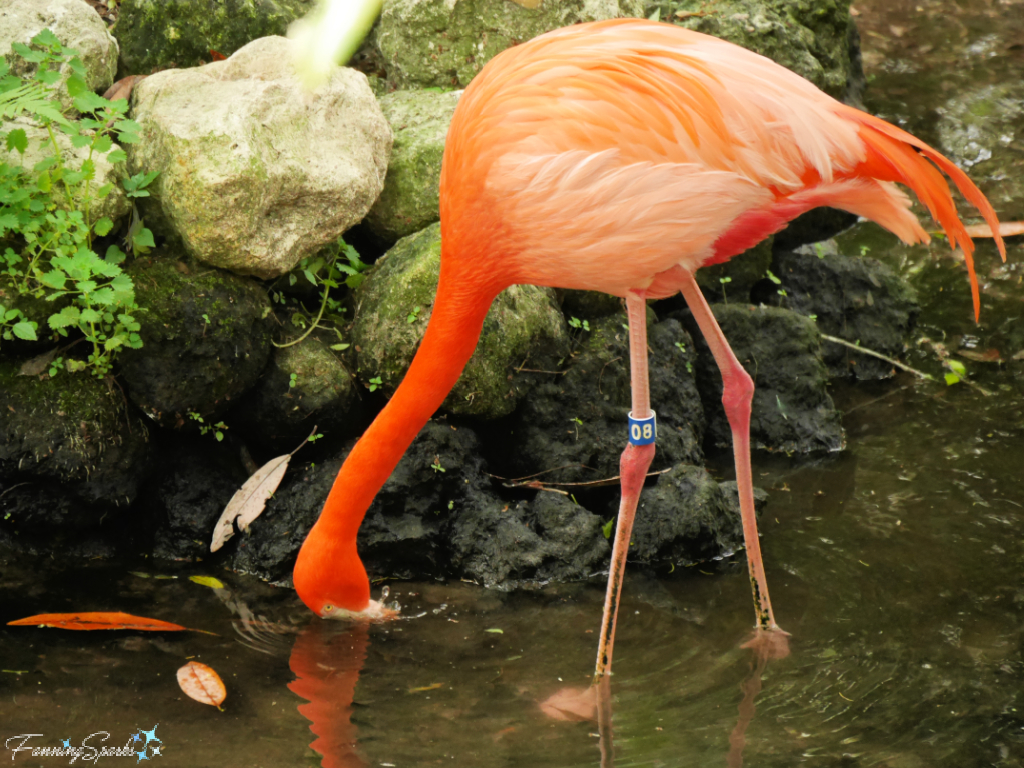
The flamingo’s long, sinuous neck is another fascinating feature. A flamingo has 19 neck bones, which is 12 more than giraffes, humans and most other mammals. This gives the flamingo a wide range of movement enabling it to reach down for food, turn backwards to preen its feathers, and perform elaborate courtship displays.
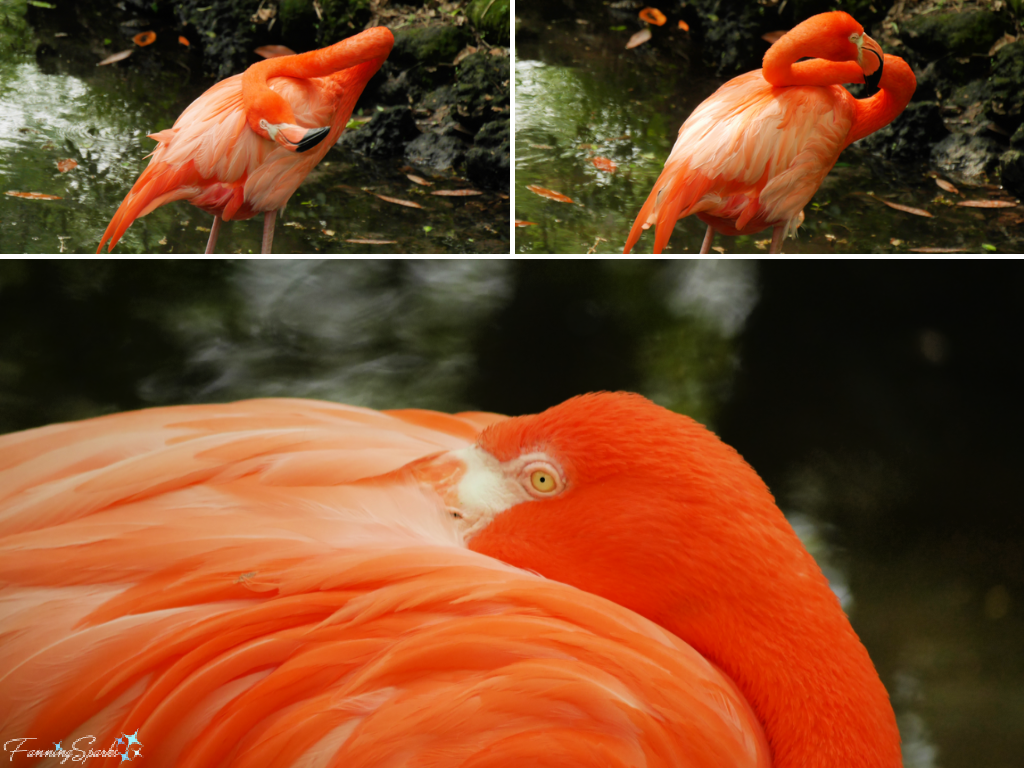
Flamingos preen using “their bills to clean and arrange their feathers. Feathers protect the flamingos’ skin and help keep the birds warm and dry. Preening helps to spread body oil over the feathers to make them waterproof.” explains Caroline Arnold.
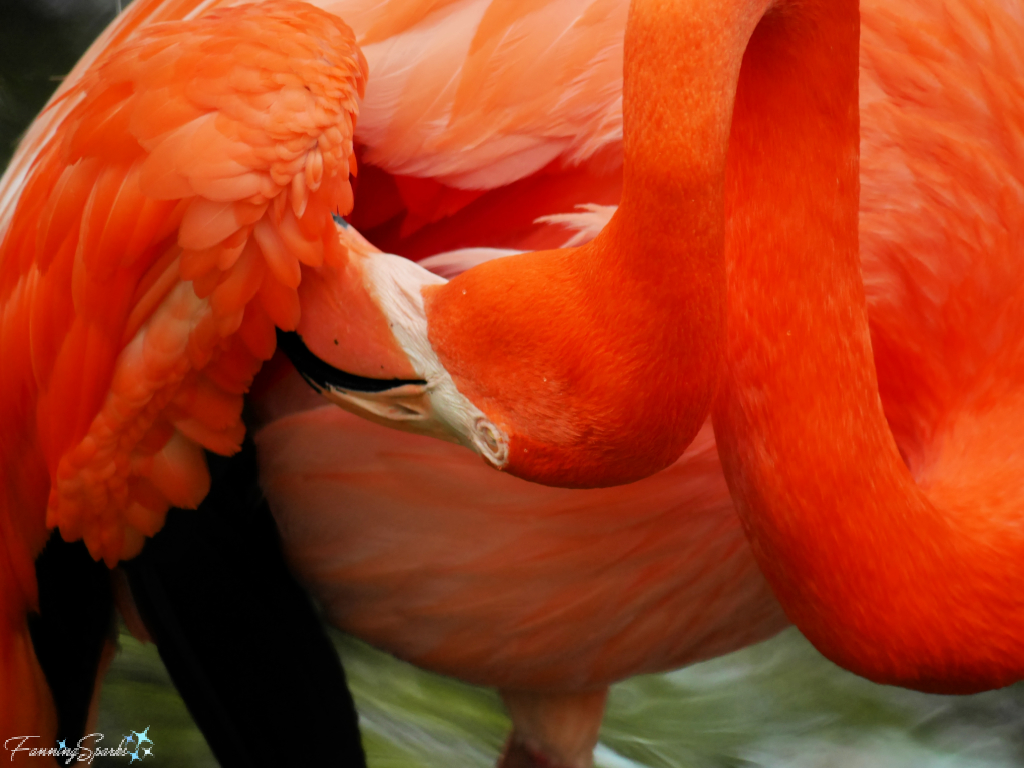
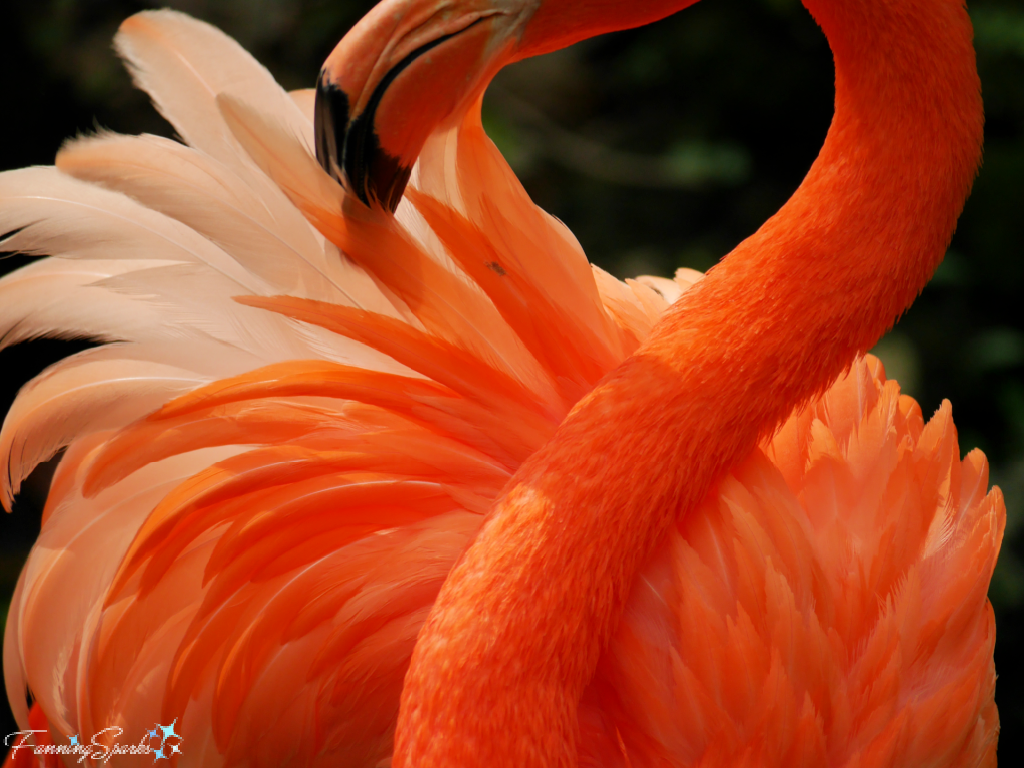
The flamingo’s long legs are also noteworthy. At first glance, it appears as if the flamingo bends its knees backwards. But, in reality, the flamingo’s knees are tucked up close to its body and they bend forward in the usual way. The surprise is the joint at the midpoint of the flamingo’s leg is actually its ankle. The flamingo stands on its toes which, apparently, is common for birds.
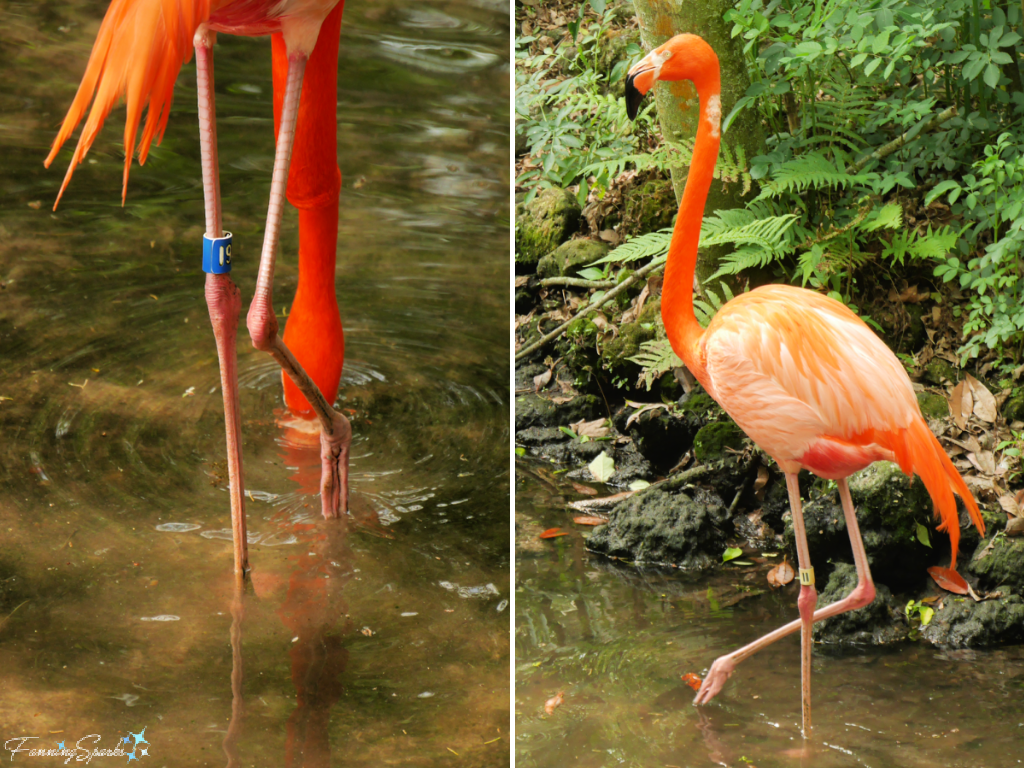
Arguably the flamingo’s most distinctive behavior is its tendency to stand on one leg. The bird’s ability to effortlessly tuck one long, spindly leg under its body while balancing on the other one is impressive. The fact they can maintain this pose, called a “unipedal stance”, for long periods of time and even sleep this way is astonishing.
“But, why do they perform this balancing act? Research suggests that flamingos use more muscle power when standing on two legs, so standing on one leg may be less tiring. Scientists also believe that a one-legged stance may help flamingos stay warm. Birds lose body heat through their limbs. By standing on one leg and tucking the other under their belly, flamingos can limit the amount of heat that escapes through their legs and feet.” explains a recent Smithsonian’s National Zoo news article.

I’ll wrap up today’s blog post with a final shot of a flamboyance of flamboyant flamingos!
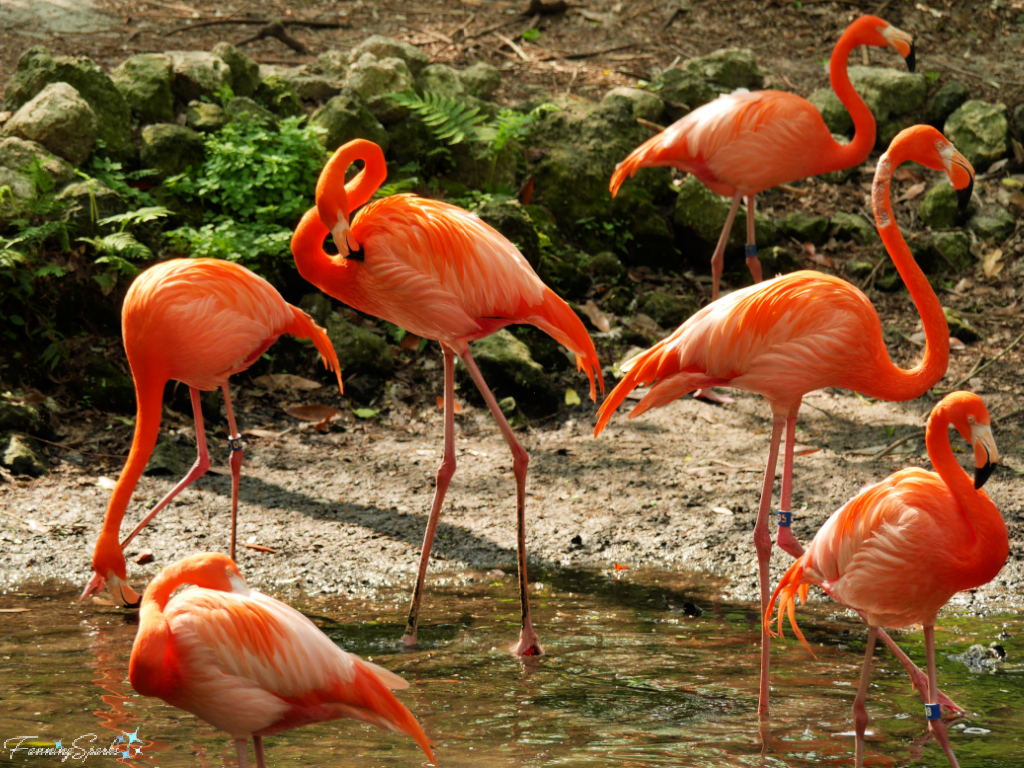
More Info
To learn more about these remarkable birds, check out the American Flamingo in Wikipedia, the 1991 book, Flamingo by Caroline Arnold on Archive.org or the following articles:
. Welcome Home? Settling the Question of Whether Flamingos are Native to the Sunshine State. A 2018 National Parks article by Nicolas Brulliard
. Why are Flamingos Pink? And Other Flamingo Facts. A 2021 article from the Smithsonian’s National Zoo & Conservation Biology Institute
Information about the Ellie Schiller Homosassa Springs Wildlife State Park can be found on the Florida State Parks website.
To learn more about my exciting adventure swimming with manatees, check out the blog post Face to Face with a Manatee.
Today’s Takeaways
1. “Thousands of flamingos used to live in the Everglades and the Keys” of Florida.
2. Nowadays, the best places to see flamingos in Florida are gardens, parks and zoos.
3. Flamingos are a fascinating bird with many remarkable features.


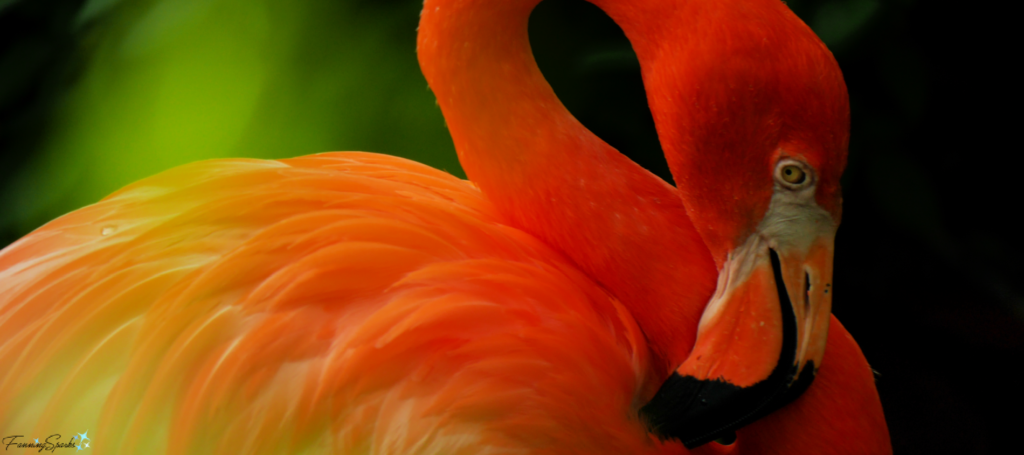


2 Comments
@Marian, They were beautiful, weren’t they? Peg
Oh the things you continue to teach me!
And to think I just enjoyed watching the beautiful birds. Thanks!